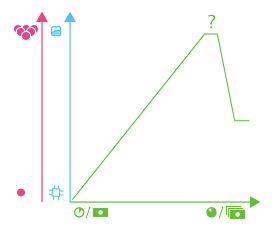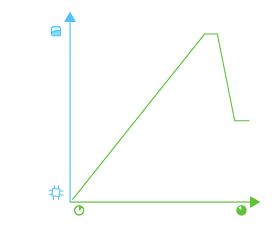More often than not, solving all the problem coming our way simply isn’t possible due to budget and/or time constraints. But if we must choose which ones are worth our time and investment, and which ones don’t, how can we determine it?
On Looking At Solutions Spatially, I proposed the three dimensions that we can measure a solution by. The ultimate decision is always up to you, but the metric is there to help you qualify it.
To sum up, there are three points of view. These are represented by three colors and analogized by three occupations, respectively:
- Magenta – The Economist: Looks at the financial and quantitative impact of the solution by asking “how many people can we reach with this solution, and at what cost?”
- Cyan – The Designer: Looks at the elegance of the solution itself by asking “how much time will it take for me to develop, and can my user save by this solution?”
- Yellow – The Ecologist: Looks at the potentiality of the solution to change the shape of the space around it by asking “how ‘plastic’ is my environment, and how far could I shift it by using the solution?”
Today, we’re going to look at the first two axis: the Designer (cyan) and Economist (magenta) – the challenge that faces them and the connections they share.
The Designer
This is how the Designer look at solutions:
- Elegant solution takes less time to use, yet more time to develop
- Hacked-together solution takes more time to use, yet less time to develop
Here’s the problem: these statements somewhat wrongly imply that the more time the designer spends on a solution, the more elegant it will become. Many designers I’ve met, through anecdotal evidences, say that they could only work on a solution for a set period of time before the quality of work and elegance of solution declines.
This notion is strongly supported by a technique that many uses, defined by James Webb Young in A Technique for Producing Ideas and reinterpreted as thus:
- Define the problem
- Research it extensively
- Try out some solutions
- Forget about it (while “constantly thinking about it” or “letting the ideas marinate”)
- Eureka!
Webb then stated that, after trying some solutions out, one must stop the working of her conscious mind to let the unconscious “background process” do the work.
This means that there indeed is a certain time limit, a point in the equation when spending more time does not necessarily equal to creating more elegant solutions.
The Economist
The Economist also posits two things in connection to the Designer’s point of view:
- Elegant solution that is friendly to the user’s mental model may impact more people, but cost more money to research
- Hacked-together solution that is less-friendly to the user may impacts less people, but cost less money to research
But, much like time, there is a limit to how much money and resource (number of people) you can throw at a problem.

This quote from Stacey Higginbotham of GigaOM summed it up:
As anyone who’s ever hosted a demolition party well knows, you can only throw so many workers at a problem before people start to linger at the edges, swill your alcohol and generally stop helping.
Implication
It turns out, then, that putting more money and resource into a project can only work so far. There is a certain point in the equation when spending more does not necessarily equal to creating more elegant solutions.
This, then, begs the questions:

- Where in the process is this point located?
- Is it possible to predict it or achieve a workable approximation?
- If so, is it possible to stop the process right at this moment so we can avoid wasting unnecessary time and energy?
Caveats
- Money and time tend to encourage most, but not all developments to be more far-reaching and elegant. A great solution does not have to cost a lot of be done over a long period
- These two factors, in most cases, are thought of as two very strong factors that impacts problem-solving. But there are other factors that should also be taken into consideration, like experience, risk-taking tendency, political power and cultural considerations


One Comment
This is an extremely excellent set of diagrams and explanations. Thank you very much for posting this. Looking forward to more.
One Trackback
[...] Last time, I talked about how the designer and economist see and gauge the effectiveness of a solution. [...]